Waterproofing & Injections Services
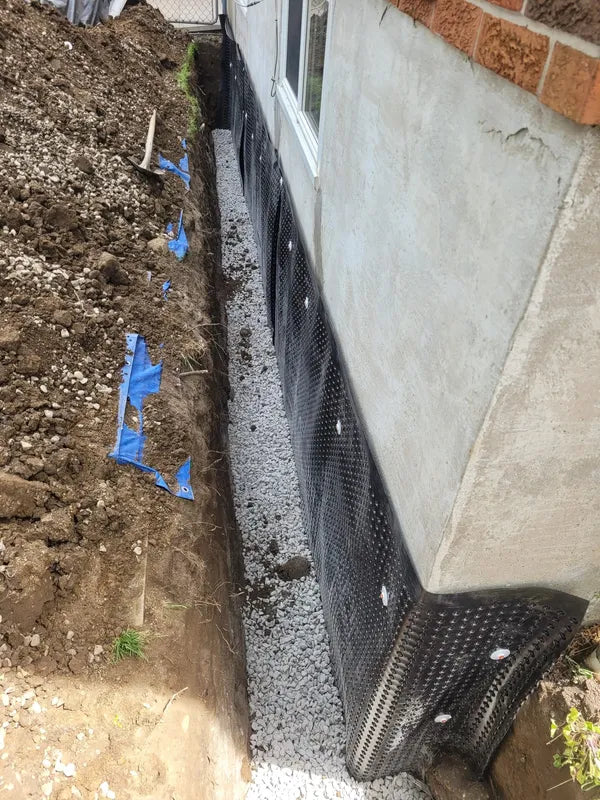
Waterproofing
Our waterproofing protocol is carefully devised and is guaranteed to be of paramount quality. Once the foundation walls and footing are exposed, the wall is then washed down, enabling proper bonding for the concrete parge. All of the cracks and voids in the foundation then get compacted via hydraulic cement, where the entire wall surface is then coated with concrete parging.
We then apply a rubber BITUTHENE® membrane to the foundation wall above the footing. A DELTA®-MS wrap/plastic drainage mat is then added to the foundation wall, down to the footing level. New weeping tile is subsequently installed and connected to the corresponding drainage point and enveloped in clean ¾” gravel. All soil gets backfilled and compacted, preventing settlements from eventually accumulating. We then remove all debris from the site. Any finished surface material is re-installed, including concrete, asphalt, interlocking stone, etc.
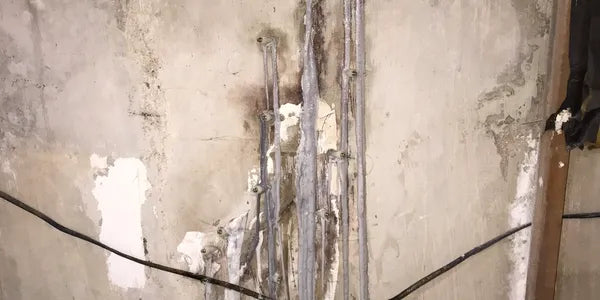
Injections
With respect to injections, cracks are initially cleaned out. Upon cleaning, holes are drilled 8" apart, 2.5" from the crack and 7" deep at a 40º angle towards the crack on one side. Conversely, on the other side the same procedure is executed. However, holes are drilled at 8" intervals in between the distances of the other side's holes to avoid any intersection for maximum efficacy.
The newly drilled holes are effectively cleaned out with a thorough vacuuming, and subsequent filling with water to enable our materials to form a clean and solid bond with the concrete. Once all debris within the drilled holes is cleared, we inject our materials into them to seal the crack.
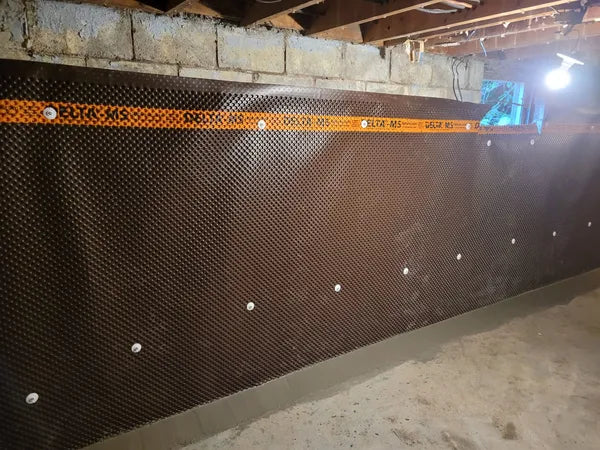
Interior & Exterior
We can perform our waterproofing service on the interior or exterior depending on what the weather conditions permit or even client preference. Exterior waterproofing consists of the replacement of the weeping tile, and on the interior side, it entails cleaning and installation of a new weeping tile as well as a sub-pump system. However, our injection service can only be performed on the interior.
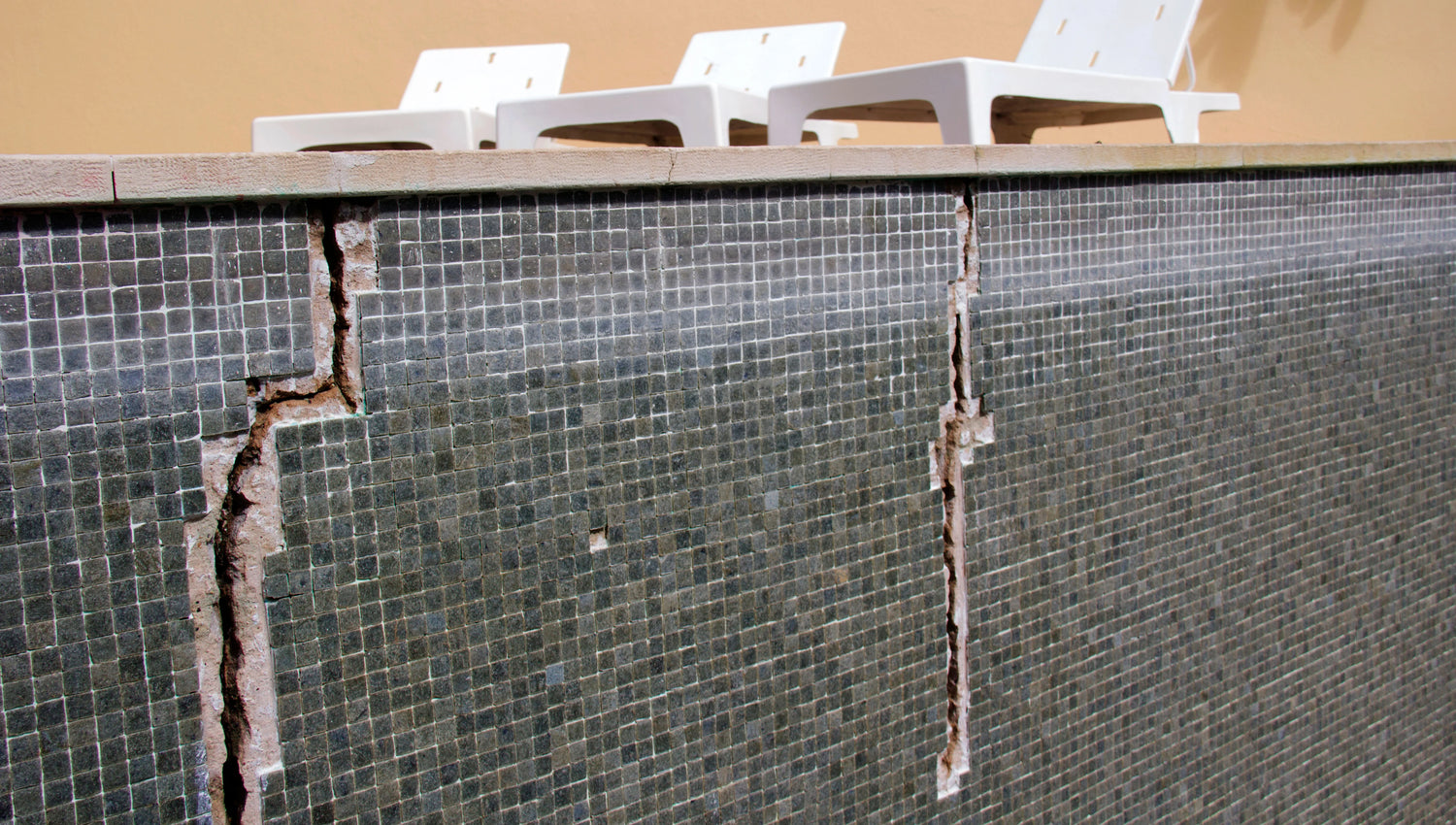
Pool Waterproofing
At Lympia Contracting, we specialize in repairing and waterproofing concrete pools, ensuring their longevity and functionality. Our team of skilled technicians employs proven techniques and industry-leading materials to address pool-related issues effectively. When it comes to repairs, we meticulously assess the condition of the concrete pool, identifying areas of concern such as cracks, leaks, or deterioration. With our expertise, we expertly repair and restore the concrete structure, ensuring its integrity. Moreover, we understand the importance of waterproofing to prevent water leakage and subsequent damage. Our waterproofing solutions include the application of high-quality sealants and coatings that create a protective barrier against water penetration, reinforcing the pool's durability. Whether fixing cracks or applying waterproofing measures, our meticulous approach and dedication to quality ensure that your concrete pool remains in optimal condition, providing you with years of enjoyment and relaxation.
How do Basement Leaks Occur?
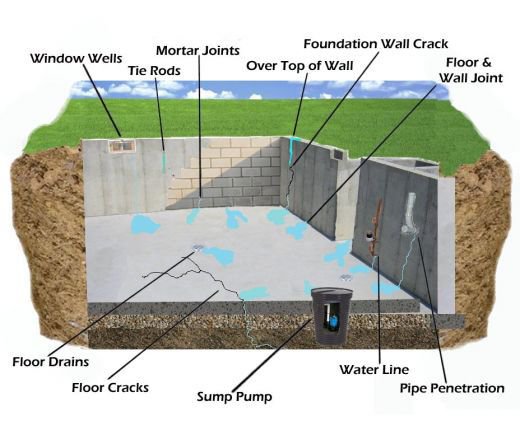
Poor foundation waterproofing
In some cases, basement leaks occur due to inadequate waterproofing of the foundation. If the exterior foundation walls were not properly sealed or waterproofed during construction, water can seep through cracks or gaps and enter the basement. Additionally, over time, the waterproofing materials may deteriorate, leading to leaks.
Faulty or inadequate drainage systems
Effective drainage systems are essential for preventing water accumulation around the foundation. If the gutters, downspouts, or exterior grading are faulty or inadequate, rainwater or melting snow can collect near the foundation walls. Over time, the hydrostatic pressure from the accumulated water can cause leaks through cracks or weak points in the basement walls or floor.
Sump pump failure
Sump pumps are installed in many basements to prevent water accumulation by pumping out excess water from the sump pit. However, if the sump pump fails to function correctly due to power outages, mechanical malfunctions, or improper maintenance, it can lead to basement leaks. Without an operational sump pump, water may build up in the basement and result in flooding or seepage through cracks or weak points in the walls or floor.
Surface water infiltration
When heavy rainfall or melting snow exceeds the capacity of the surrounding soil to absorb and redirect water away from the foundation, surface water infiltration can occur. This can happen if the ground slopes towards the basement or if there is insufficient grading around the property. The excess water can find its way into the basement through cracks, gaps, or even windows and doors that are not properly sealed.
Window or window well leaks
Improperly sealed or poorly maintained basement windows or window wells can be another source of water infiltration. If the windows are not adequately sealed, or if the window wells do not have proper drainage or covers, rainwater or melted snow can seep through gaps or accumulate in the wells. This can lead to leaks around the windows or even enter the basement through the window frames.
Hydrostatic pressure from the groundwater
When the water table rises due to heavy rains, nearby bodies of water, or excessive irrigation, hydrostatic pressure can exert force on the basement walls and floor. This pressure can cause water to seep into the basement through cracks, porous concrete, or weak points. Basements that are below the water table level or are located in areas with high groundwater conditions are particularly susceptible to this type of leakage.
Condensation and moisture buildup
Inadequate ventilation and high humidity levels in the basement can result in condensation and moisture buildup, leading to leaks. If the basement lacks proper airflow or insulation, moisture can accumulate on walls, floors, or pipes, eventually causing water damage. Condensation can also form on cold surfaces, such as windows or pipes, and drip onto the basement floor, contributing to the overall moisture problem.
Cracks in basement floors
Similar to cracks in foundation walls, cracks can also develop in the basement floor over time. These cracks can occur due to settlement, shifting soil, or the natural aging of the building. When it rains or when the water table rises, water can seep through these cracks and lead to basement leaks. Regular inspection and repair of basement floor cracks are important to prevent water infiltration.
Exterior landscaping and grading issues
Improper landscaping and grading around the exterior of the house can contribute to basement leaks. If the ground slopes towards the foundation, it can direct water towards the basement walls instead of away from the property. This can result in water pooling near the foundation and finding its way into the basement. It's important to ensure proper grading and landscaping techniques are employed to promote water drainage away from the foundation.
What are injections?
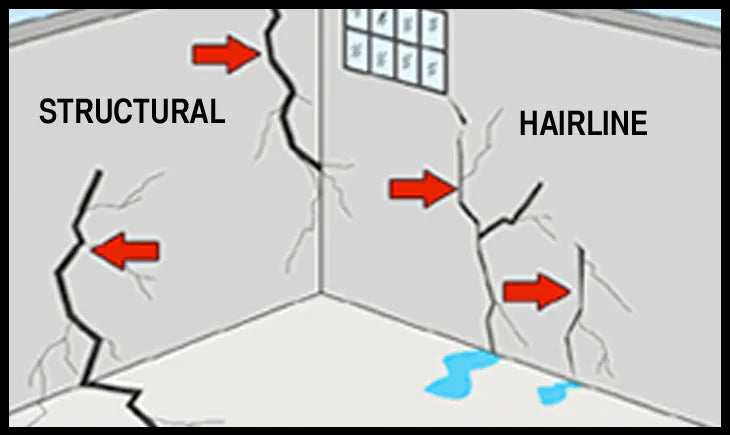
Concrete basement injections are used for crack repair
Concrete basement injections are a common method employed to repair cracks in basement walls or floors. This technique involves injecting a specialized liquid or epoxy material into the crack, which fills the void and helps restore the structural integrity of the concrete.
They prevent water infiltration
One of the primary purposes of concrete basement injections is to prevent water infiltration through cracks. The injected material creates a barrier that seals the crack and prevents water from seeping into the basement, thereby protecting the interior space from potential water damage.
They enhance the structural strength of the concrete
Concrete basement injections not only seal cracks but also help enhance the overall structural strength of the concrete. By filling the voids within the crack, the injected material provides additional support, preventing further cracking or deterioration.
Different injection materials are available
Various injection materials are available for concrete basement injections, including epoxy resins, polyurethane foam, or acrylic gels. The choice of material depends on factors such as the type of crack, its size, and the desired level of flexibility or rigidity required for the repair.
Injections can be done from the interior or exterior
Concrete basement injections can be performed from either the interior or exterior of the basement, depending on the accessibility and location of the crack. Interior injections are more common and involve drilling holes into the crack from inside the basement, while exterior injections require excavation around the foundation to access the crack from outside.
They are a cost-effective repair method
Concrete basement injections are generally considered a cost-effective repair method compared to more extensive alternatives like full foundation replacement. By targeting the specific crack and repairing it directly, injections can save both time and money while effectively addressing the problem.
Proper preparation is crucial for successful injections
Before performing concrete basement injections, proper preparation is essential for optimal results. This includes cleaning the crack to remove debris, applying a primer or bonding agent, and ensuring the crack is properly aligned and open for injection.